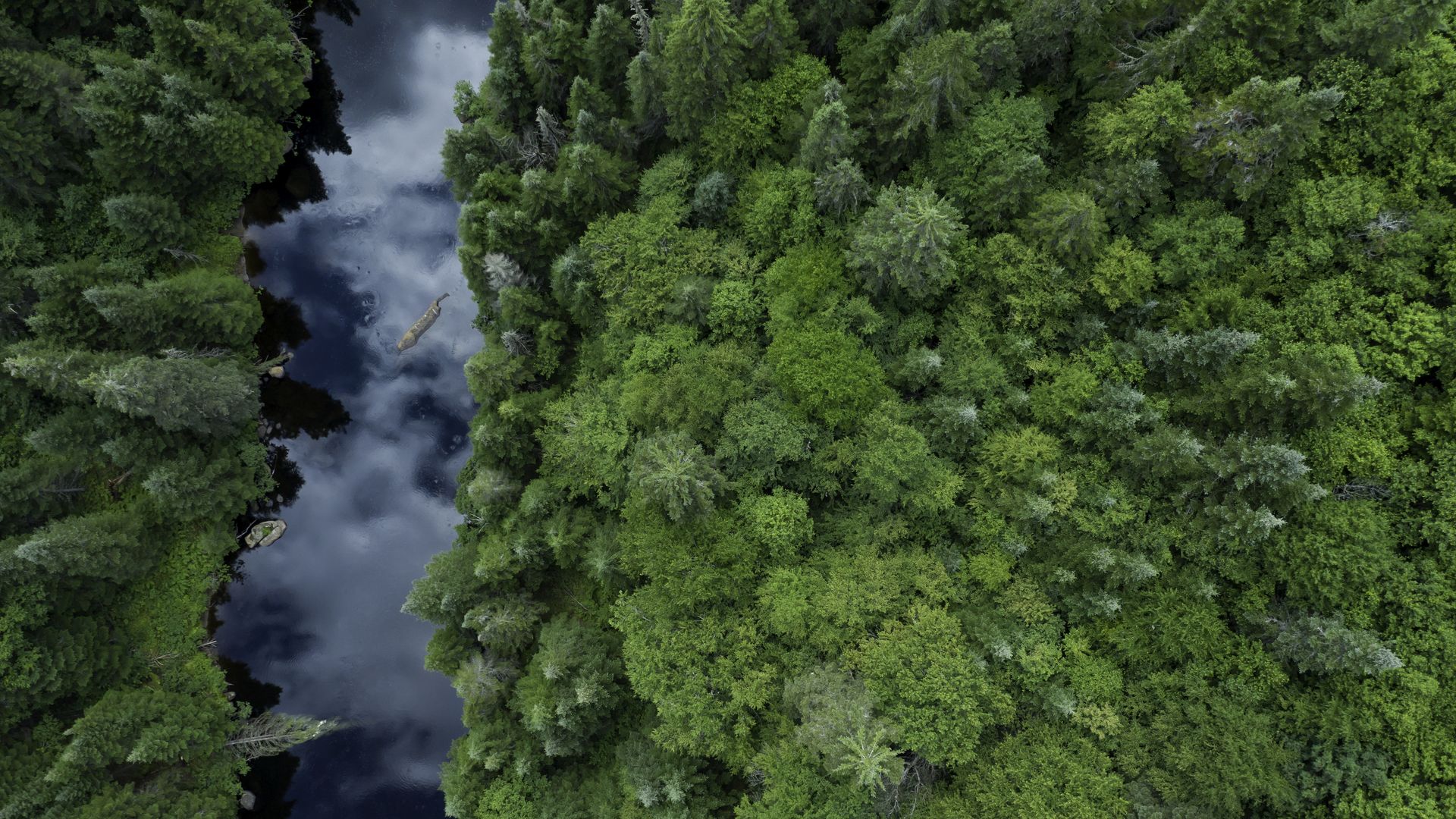| | | | | | | | | | | Axios Science | | By Alison Snyder · Sep 01, 2022 | | Welcome back — to you and me! I spent some vacation time in Iceland where there was a lot of talk about volcanoes. We start today on that subject, look at climate risk to the planet's forests, and get a new glimpse of an exoplanet image. There are 1,514 words — about a 6-minute read. | | | | | | 1 big thing: How some volcanoes erupt with little warning |  | | | Illustration: Annelise Capossela/Axios | | | | The inner workings of volcanoes that erupt with little warning are being revealed, exposing potentially new ways to monitor them. The big picture: The science of volcanoes — and the monitoring and forecasting tools it informs — is largely based on what's known about a handful of the world's most studied volcanoes, including Mount Etna in Italy, that typically show signs of eruption. - There are an estimated 1,350 volcanoes on Earth that are potentially active — and about 100 observatories. Some monitor multiple volcanoes but many volcanoes are under-studied and unmonitored.
- "Eruptions don't happen often so being able to have different eruptions to study from a lot of different contexts and volcanoes will help us to understand the general physics of eruptions and improve our models of the insides of volcanoes," says Emily Montgomery-Brown of the United States Geological Survey.
What's new: In a paper published this week in the journal Nature, researchers used extensive satellite data, measurements from a nearby network of seismometers and other tools to study the 2021 eruption of Mount Nyiragongo near the city of Goma in the Democratic Republic of Congo. - Nyiragongo is a bit of a special case: It behaves as an open vent with a large lake of lava in the crater at its top. Because magma isn't bottled up in these types of volcanoes, pressure generally doesn't build up over time and trigger signals of an impending eruption. Typically the shape of the volcano itself changes, small earthquakes occur and the volcano anomalously releases gasses in the days and weeks before an eruption.
- But in Nyiragongo, there wasn't a signal until less than an hour before the eruption.
- Delphine Smittarello of the European Center for Geodynamics and Seismology in Luxembourg and her colleagues describe what may have happened in the new paper: Magma stored close to the surface of the crater opened a path or dike on the flank of the volcano. The dike quickly ruptured the stressed surface of the volcano, the eruption started and lava flowed from the volcano — "less than 40 minutes after the first detectable anomalous seismic event."
- "Being already close to the surface, the magma only had to propagate laterally for a short distance before erupting, leaving little time to detect and interpret the associated signals," Smittarello and her colleagues write.
- After the eruption, cracks formed in the surface nearby, the volcano deformed and small earthquakes occurred.
"We show that an eruption can start with only tiny and very short-term precursors," Smittarello said in an email. - "There is still a lot to do to improve the detection and real-time interpretation of these tiny signals," Smittarello said.
- Similar mechanisms occur in Ambrym in Vanuatu and Kilauea in Hawai'i, where signs of dike formation have been used to forecast eruptions. But it is unclear if the technique can work elsewhere, Montgomery-Brown notes in an accompanying article.
How it works: Most eruptions come with warnings that can be monitored by networks of seismometers and other tools. But many volcanoes are in remote areas without seismic networks. - Satellite data is increasingly being tapped to try to forecast volcanic eruptions by observing the deformation of volcanoes and the flow of magma under the surface.
- A study published earlier this year used radar data from satellites to measure Nyiragongo's lava lake levels as an indicator of changes in the volcano's plumbing that could aid forecasting.
Read the entire story. |     | | | | | | 2. Where forests are at climate risk |  | | | Boreal forest in Quebec, Canada. | | | | Climate change is putting the forests of western North America, the southern boreal regions and the southern Amazon at high risk in the 21st century — but the vulnerability of forests in other areas is less clear, according to a new global assessment. Why it matters: Climate change may be harming forests' carbon-capturing capabilities, which underpins some approaches to mitigating climate change by conserving and restoring forests. - "If forests are tapped to play an important role in climate mitigation, an enormous scientific effort is needed to better shed light on when and where forests will be resilient to climate change in the 21st century," William Anderegg of the University of Utah and his colleagues write today in the journal Science.
How they did it: Anderegg and his colleagues looked at three different approaches modeling carbon storage, biodiversity and the risk that a forest will be disturbed. - They found carbon storage on average will increase globally by 2100 but there was a higher risk of carbon loss in drier areas of the tropics, including southeast Amazonia, and the southern boreal forests of Canada.
- The risk of ecosystems shifting was highest at the edges of forests.
- Boreal forests and the tropics are also at the highest risk of being disturbed by fires, drought or insect damage.
What they found: When the approaches were combined, there was large uncertainty in most areas but some — including forests in western North America, the southern Amazon and the southern boreal regions — were "consistently at high risk," they report. - "One of the most surprising findings was how little the three different approaches agreed in their spatial patterns and at a global scale, they didn't agree very well at all," Anderegg says.
- "That tells us that there's a huge uncertainty across our different scientific approaches for illuminating the future of climate risks on Earth's forests."
What's next: The researchers say models of forest disturbance — and how they can recover from it — need to be improved. Check out a visualization of the findings. |     | | | | | | 3. Study: Greenland ice melt will raise sea levels by nearly a foot |  | | | Ice covered fjords and mountain landscapes last month on Greenland. Photo: Britta Pedersen/picture alliance via Getty Images | | | | The Greenland Ice Sheet is on course to lose hundreds of trillions metric tons of ice and contribute close to a foot in average global sea level rise through 2100, regardless of the magnitude of greenhouse gas emissions cuts during the period, glaciologists found in a new study published Monday, Axios' Jacob Knutson writes. Why it matters: The study indicates human-caused global warming driven by greenhouse gas emissions has effectively locked in a certain amount of sea level rise from the melting of the Greenland ice sheet. - Already with sea level rise seen so far, coastal flood events are far more common in cities like Miami and Charleston, and future storms are expected to have more damaging storm surges.
By the numbers: The researchers estimated the ice sheet will lose about 3.3% of its total volume within this century, which corresponds to 110 trillion metric tons of ice and an average global sea level rise of at least 270 millimeters, or 10.6 inches. - For comparison, that amount of ice loss could cover the entire U.S. with 37 feet of water, the study, published in the journal Nature Climate Change, finds.
Our thought bubble, via Axios' Andrew Freedman: This study is significant since it relies on observations during two decades of studying Greenland, rather than just computer modeling. - In addition, the findings illustrate how hard it is to press the brakes on ice melt even if emissions were to halt completely now.
What they're saying: Jason Box, the study's lead author and a professor at the National Geological Survey of Denmark and Greenland (GEUS), said the study actually puts forward low estimates on the Greenland Ice Sheet's future, as the world will not instantly stop burning fossil fuels. - "It is a very conservative rock-bottom minimum. Realistically, we will see this figure more than double within this century," Box said in a statement Monday.
Go deeper. |     | | | | | | A message from Axios | | NEW: Subscribe to Axios Codebook | | |  | | | | Decode key cybersecurity news and insights. Dive into breaking news and long-term trends in the field, from ransomware and phishing to privacy and data protection to national security and disinformation. Subscribe for free | | | | | | 4. Worthy of your time | | The loneliest trees (Aisling Irwin — Nature) Monkeys look for patterns that aren't there—just like humans do (Dan Robitzski — The Scientist) The first private mission to Venus will have just five minutes to hunt for life (Jonathan O'Callaghan — MIT Technology Review) A somber search (Tess Joosse — Science) |     | | | | | | 5. Something wondrous |  | | | Exoplanet HIP 65426 b in different bands of infrared light. The star indicates the location of the planet's host star. Credit: NASA/ESA/CSA, A Carter (UCSC), the ERS 1386 team, and A. Pagan (STScI) | | | | This is the first direct image taken by the James Webb Space Telescope of a planet outside our solar system. The big picture: More than 5,000 exoplanets have been discovered over the past 30 years, giving astronomers hints about the variety of worlds in the universe. Direct images of these distant planets are expected to provide more details about their composition and formation — and open the next chapter in the search for life beyond Earth. - "This is a transformative moment, not only for Webb but also for astronomy generally," Sasha Hinkley, associate professor of physics and astronomy at the University of Exeter in the United Kingdom, said in a NASA news release.
Details: JWST captured the image of exoplanet HIP 65426 b in four different bands of infrared light. The feat is accomplished using small masks on JWST that block bright light from the exoplanet's host star, HIP 65426. - The planet, which was discovered using an instrument on the European Southern Observatory's Very Large Telescope in Chile in 2017, is a gas giant about 6 to 12 times the mass of Jupiter, according to NASA.
- It is just 15 million to 20 million years old and about 100 times farther from its star than Earth is from our Sun.
- The research has not been peer-reviewed.
What to watch: Infrared images are expected to give astronomers unprecedented information about the temperatures and masses of exoplanets and to help them spot weather on the far-off worlds. |     | | | | | | A message from Axios | | NEW: Subscribe to Axios Codebook | | |  | | | | Decode key cybersecurity news and insights. Dive into breaking news and long-term trends in the field, from ransomware and phishing to privacy and data protection to national security and disinformation. Subscribe for free | | | | Big thanks to Laurin-Whitney Gottbrath and Miriam Kramer for editing this newsletter, to Annelise Capossela for this week's illustration and to Carolyn DiPaolo for copy editing. |  | | Are you a fan of this email format? It's called Smart Brevity®. Over 300 orgs use it — in a tool called Axios HQ — to drive productivity with clearer workplace communications. | | | | | | Axios thanks our partners for supporting our newsletters. If you're interested in advertising, learn more here.
Sponsorship has no influence on editorial content. Axios, 3100 Clarendon Blvd, Arlington VA 22201 | | | You received this email because you signed up for newsletters from Axios.
Change your preferences or unsubscribe here. | | | Was this email forwarded to you?
Sign up now to get Axios in your inbox. | | | | Follow Axios on social media:    | | | | | |
No comments